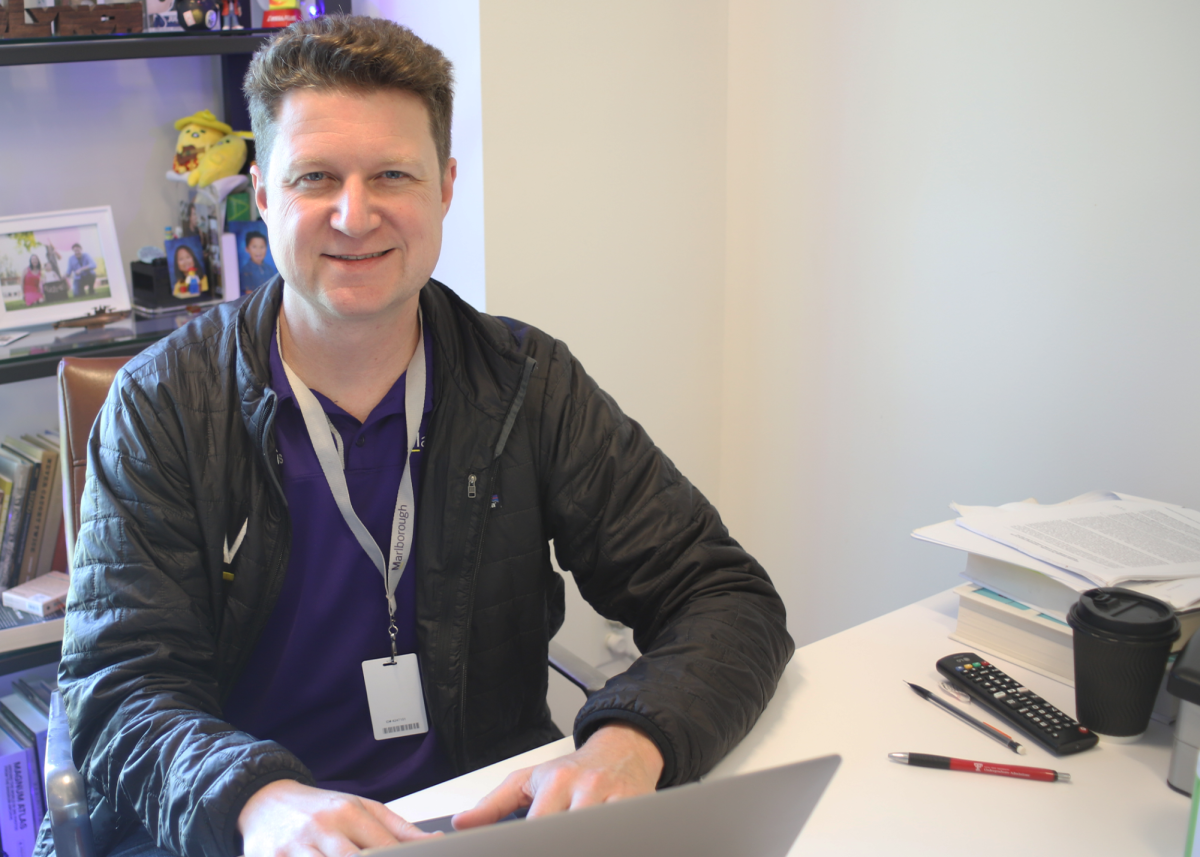Anacapa is the second smallest island in the eight-island archipelago of the Channel Islands.
Nonnative weeds, specifically red-flowered ice plant and cheeseweed, are disrupting the native breeding habitats of Anacapa’s seabird population. Anacapa is home to the largest protected breeding colony of western gulls in the world and the largest breeding colony of California brown pelicans.
The Marlborough group partnered with the California Institute of Environmental Studies, a non-profit specializing in seabird ecology and habitat restoration, for a day of weeding. This is the first year that Collier ran the trip, and at least one student from each grade level participated.
“It was great to see representation from each grade level at Marlborough. Having 7th through 12th graders join us added much fun to the day, and [it] was a breadth of ages we don’t often see on school trips,” Collier said.
Bella ’20 was one of the two juniors who attended. Anacapa marked the second Channel Island that she visited in association with Marlborough. Last year, Bella and other students in the oceanography course kayaked around Santa Cruz Island, the largest of the eight islands.
“It was just like the type of thing I love,” Bella said. “Automatically when I saw it, I was like, ‘Of course I’m signing up for this,’ because I love just being out in nature and doing naturalist environmental service.”
Intense rains that morning roughened the one-hour boat ride to Anacapa. Collier was in contact with Island Packers Cruises, a Channel Islands boating service, to ensure that the waves were calm enough to travel. Despite being cleared to cruise to Anacapa, choppy waves made several students seasick, including Bella.
Skies eventually cleared to reveal Anacapa Island, a location where many students, like 7th grader Isabelle, had never visited.

“I don’t think it’s quite what I was expecting. I thought it would be bigger, but it was a small island, and I thought there was going to be a lot of researchers, but it was just the group of Marlborough girls and three other people on the island,” Isabelle said. “You can walk around the entire thing in an hour, so I thought that was pretty crazy, and also there’s only a few buildings. The entire thing is just seabirds.”
Students then weeded iceplant and cheeseweed, clearing sections of land at a time with only their gloved hands. They developed an informal competition to find the largest root, some winners digging roots half as big as some of the students.
“We had kneepads. We got down dirty in the mud. We just had huge patches of cheeseweed, and we were like, ‘We’re going to do this,’” Bella said.
They had a break for lunch, then embarked on a two-mile hike to Inspiration Point. The lookout offered a view of the ocean and surrounding islands.
“Just looking around, it’s a really beautiful view, and I just thought that it earned its name ‘Inspiration Point.’ It was inspiring, and it was a cool experience,” Isabelle said.
The boat ride back was gentle, and the group passed by four whales before arriving on the mainland.
“It was rough when we were going there. But, on the way back, we saw some gray whales right next to our boat, so that made up for it,” Bella said.





